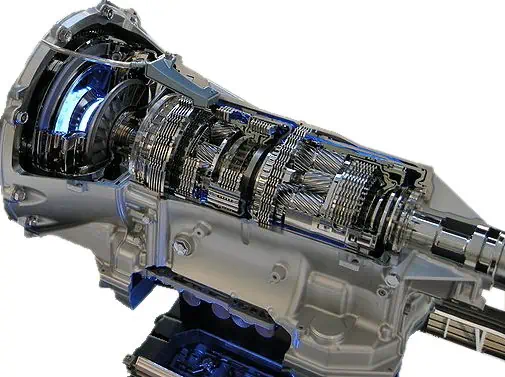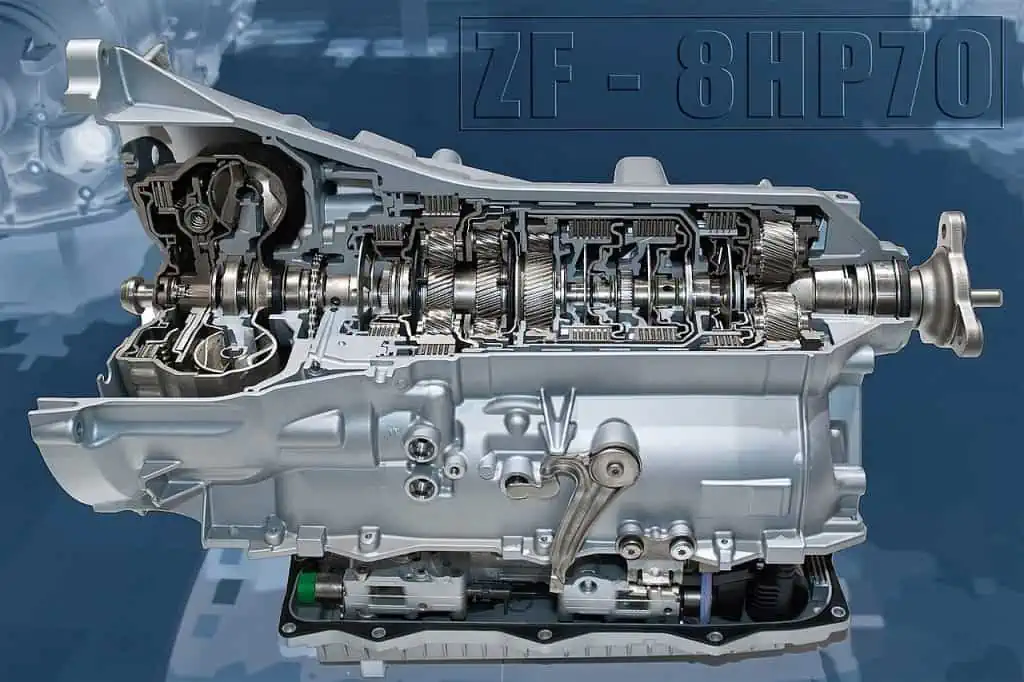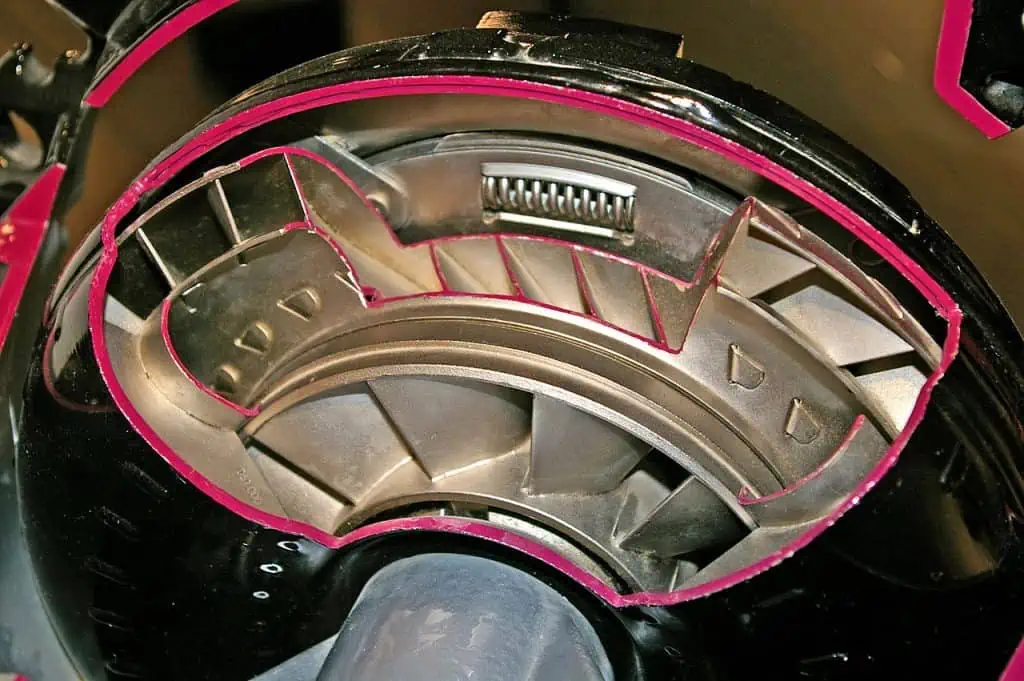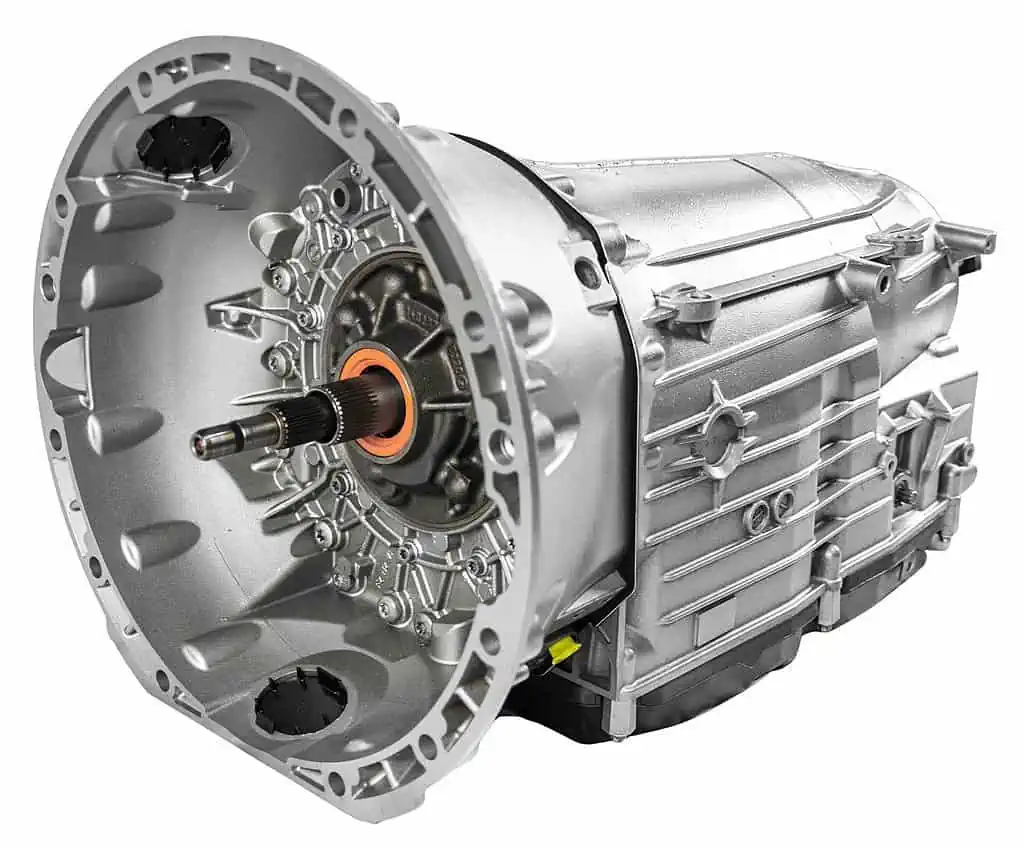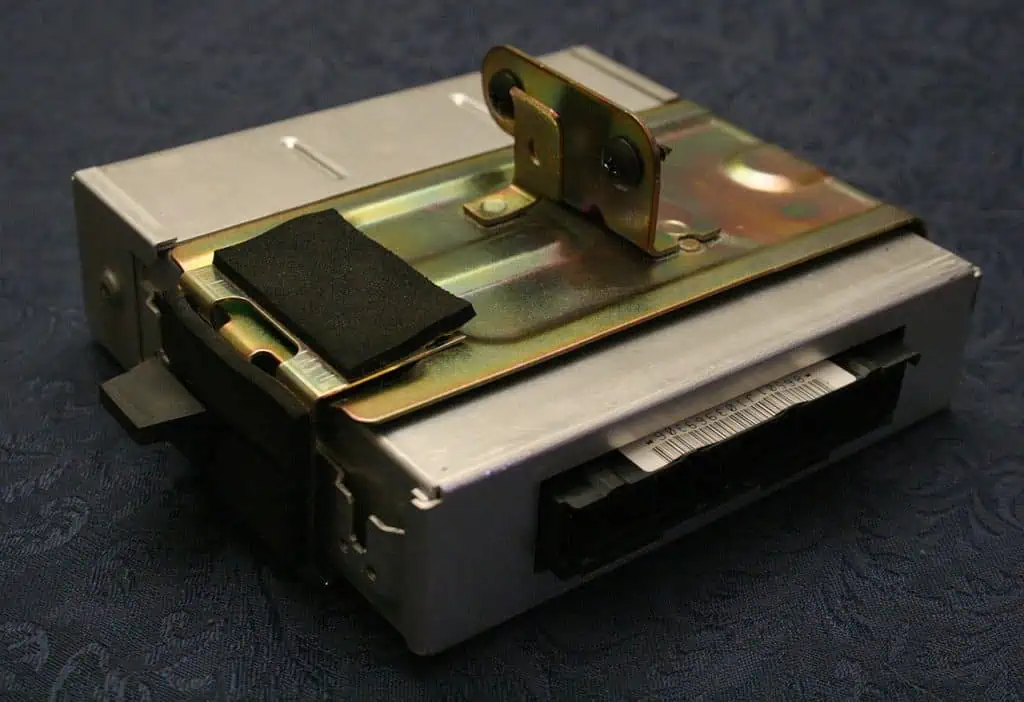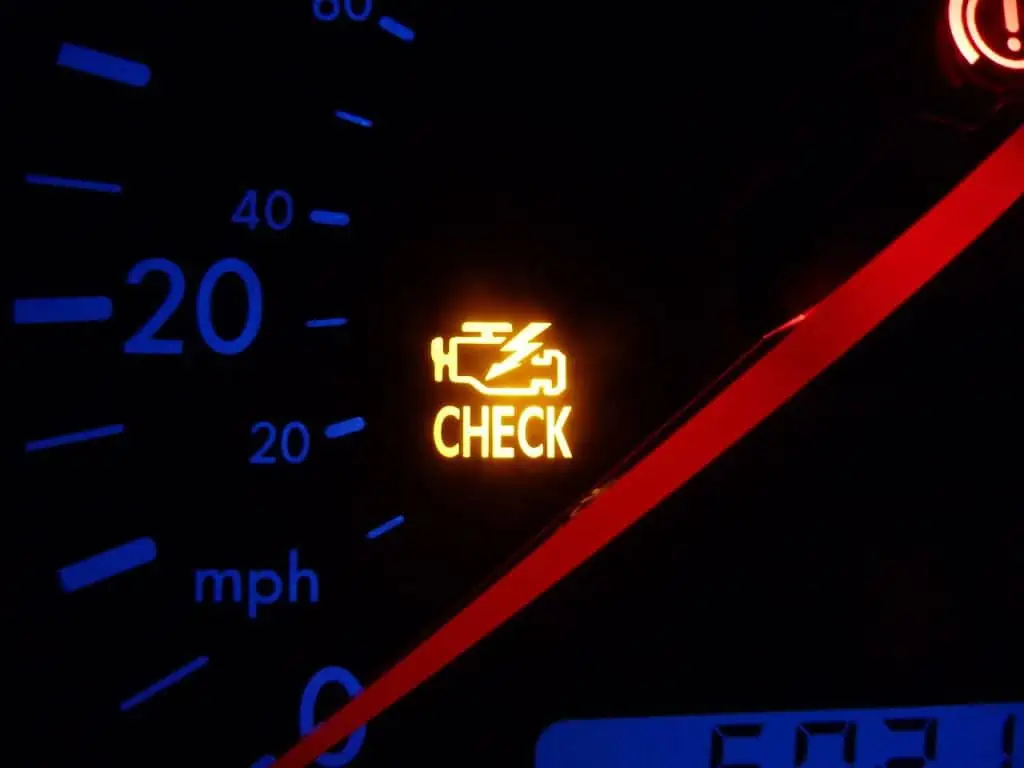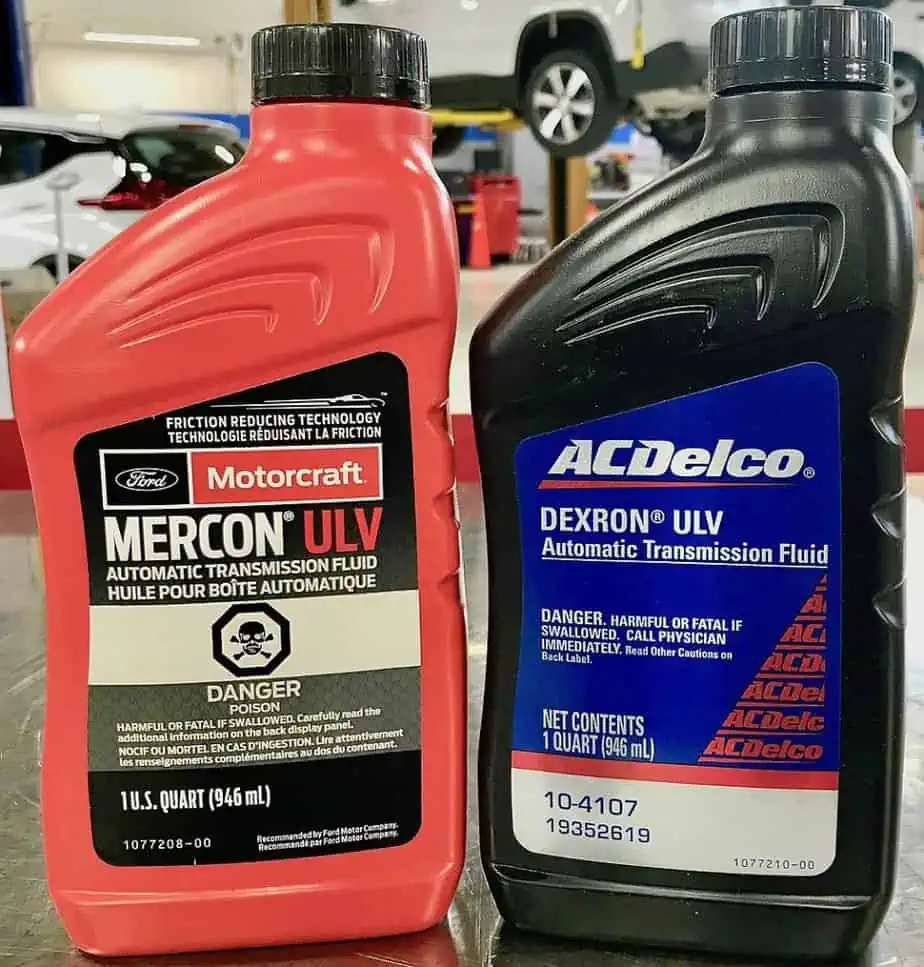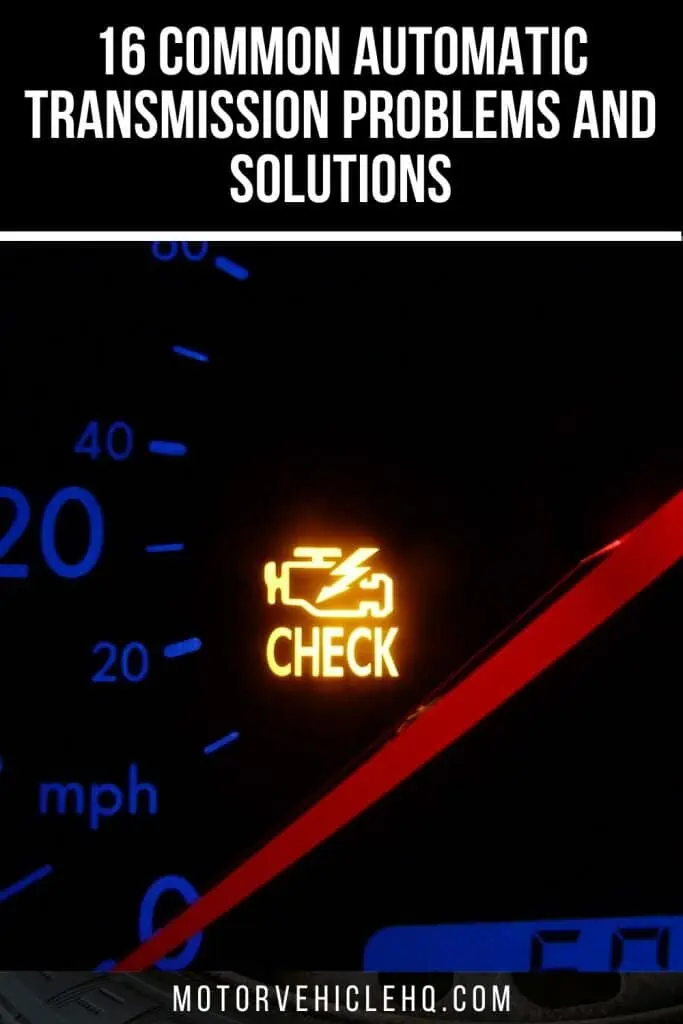Any vehicle may experience a transmission issue at some point. Just remember that there is always a solution available, regardless of the issue.
The automatic transmission is a crucial component of your car, and like all other parts, it will deteriorate over time. You must keep it current if you want it to last for a long period.
To ensure long-lasting performance, you must give your automatic gearbox the correct care and attention. The fact that replacing an automatic transmission might cost more than replacing an engine surprises many people.
This makes it crucial that you pay attention to the symptoms and issues listed below if you want to prevent needing to perform a significant repair.
You could cause further harm to the system and perhaps break the gearbox if you ignore the warning signs that the automatic transmission is having issues. Fixing a single issue would be simpler than allowing it to spark further issues.
Ignoring minor issues will ultimately result in them getting worse and costing you more money. Peruse this: Fix the cause of the gearbox fluid leaks coming from the flywheel, bell housing, and the front of the automobile.
You can get a general concept of what they are and how to remedy them by reading an overview of automatic transmission problems and solutions. I’ll also examine issues with shifting, such as why an automatic transmission won’t go into high gear and why it only shifts manually.
I’ll explain why the automatic transmission rattles as you drive or accelerate, as well as how to remedy it, in addition to how to fix Nissan Xterra transmission issues.
Automatic Transmission: A Background Check of Its History
In 1934, semi-automatic automobile transmissions were introduced by GM and REO. These transmissions presented fewer difficulties than the standard manual transmission, although they still needed clutch-to-shift ratios.
Internal components of an automatic transmission by Silverxxx / CC BY-SA 3.0. The planetary transmission was one of the most important developments on the way to the modern automatic gearbox. Wilson-Pilcher invented the hydraulic control version of this technology in 1900, but GM was the first to use it. A single lever was used to switch between the two trains, each of which had four forward gears.
The planetary gearbox of the GM transmission, the first of its kind to utilize hydraulic control, enables the gears to shift per the vehicle’s travel speed.
One of the most significant advancements on the path to the contemporary automatic transmission was planetary transmission. Although GM was the first to adopt the hydraulic control version, Wilson-Pilcher first developed this technology in 1900.
This new invention featured two trains with four forward gears each, which could be changed by pulling a single lever.
What Is the Working Principle of an Automatic Transmission?
The most typical automatic transmission shifts gears with the aid of hydraulic power. This technology, according to How Stuff Works, integrates a torque or fluid coupling converter with gear sets that offer the vehicle the desired range of gears.
The torque converter links the engine to the transmission and transmits power to the gears via pressurized fluid. This device takes the role of a manual friction clutch and enables a full stop without stalling.
The functioning of an automatic transmission is described in the Art of Manliness. The torque converter’s turbine is powered by transmission fluid, which is created as the engine transfers power to the torque converter’s pump.
This device boosts the fluid’s power and transfers even more of it back to the turbine, spinning the latter and its linked central shaft in the process. The first planetary gear set in the transmission receives the energy produced by this rotation from the shaft.
Its hydraulic control is what distinguishes this kind of transmission. An oil pump presses the transmission fluid, which enables the speed to vary according to the vehicle’s speed, the number of wheel spins per minute, and other variables.
The gear pump draws and pressurizes transmission fluid from a sump and places it between the planetary gearset and the torque converter. The torque converter housing is directly connected to the engine’s flexplate from the pump input.
The vehicle cannot be started by pushing the starter button when the engine is not running because the transmission lacks the necessary oil pressure to function.
The planetary gear train is a mechanical device in which several bands and clutches connect the gears. The bands transmit torque from the engine and rotate to increase or reduce gears as the driver shifts through the gears.
The various gears can also be referred to as sun gear, ring gear, and planetary gear. The way the gears are set up impacts how much power will transfer from one gear to the next and out to the vehicle’s drive train when you shift.
An Automatic Transmission’s Gears
An automatic transmission has the following gears:
Internal components of an automatic transmission are shown by Ritchyblack. You can change gears while driving at different speeds thanks to your car’s automatic transmission. When you are driving properly, there is nothing you need to do to change or shift gears. Although the automatic transmission is important, failing to pay attention to it can ruin your driving experience.
- When you put your car in drive, all of the forward gear ratios are engaged, according to How a Car Works. This implies that the transmission is capable of switching between its entire set of gears as required. The most prevalent automatic gearbox gear count is six, while older vehicles and entry-level compact automobiles may still have four or five.
- Third gear either restricts the gearbox to the first, second, and third gear ratios or locks it in third gear. This gives you the strength and traction you need to move forward or backward, or to tow a boat, an RV, or a trailer. Most cars automatically shift out of third gear when the engine hits a predetermined number of revolutions per minute (RPM) to protect the engine.
- Second gear either restricts the gearbox to the first and second gear ratios or locks the transmission in second gear. This equipment is perfect for driving in icy, snowy, and other forms of bad weather as well as navigating uphill and downhill in slick circumstances.
- Although some cars will automatically shift out of first gear to safeguard the engine at a particular RPM, first gear is employed to lock the transmission in first gear. This gear, like second and third, is best utilized when towing, riding uphill or downhill, and when the road is slick or ice.
What are the Successive Benefits of an Automatic Transmission?
How Stuff Works claims that driving without a clutch, as is necessary with a manual transmission, is the largest benefit of an automatic transmission. Since just two functioning limbs are needed to operate an automatic, people with many infirmities can drive one.
The absence of a clutch also frees you from having to focus on manually shifting and watching the tachometer to make the appropriate shifts, giving you more time to concentrate on the task of driving.
Additionally, compared to a manual transmission, many drivers find it simpler to handle an automatic transmission at moderate speeds. Idle creep is a condition caused by the hydraulic automatic gearbox that pushes the car to continue ahead even when it is idling.
Which are the Common Automatic Transmission Problems and Solutions?
The automatic transmission in your car is what enables you to shift gears at various speeds while driving. You don’t need to do anything to change or shift gears when driving normally.
The automatic transmission is crucial, but if you don’t pay attention to it, it can change your driving experience and be very frustrating.
You should be aware of these issues and how to address them to better diagnose any issues you may have with your automatic gearbox.
If you don’t know how to solve the various automatic transmission issues, you should call a specialist to handle the repairs.
The following are the common automatic transmission problems and solutions:
1. Low Level of Transmission Fluid
Low transmission fluid levels are the most typical cause of slippage in automatic transmissions, which you may notice when driving. The transmission fluid is required to lubricate the components and maintain the proper operation of your car.
A torque converter’s cutaway view by BerndB~commonswiki / CC BY-SA 3.0. The torque converter’s main responsibility is to convert the engine’s output into torque that the transmission can use. Over time, the torque converter will degrade and undergo damage. When the torque converter is working properly, the fluid will flow through it. However, if the transmission fluid is broken, automatic transmission issues and fixes may emerge from the inability of the fluid to flow.
If your transmission slides, the car’s engine will continue to rev but won’t transmit any power to the wheels to propel the vehicle. Sleeping problems brought on by low transmission fluid will only get worse as friction and overheating from use increase.
A fluid change will typically cost around $100, with a dealer charging up to $250 and an independent mechanic charging as little as $80. When dealing with the most typical automatic transmission problems and solutions, the procedure typically costs $100.
You must understand how to check your transmission fluid level to recognize the symptoms of automatic transmission problems and solutions. Using a dipstick in the engine bay is a pretty simple way to accomplish this in many autos.
The dipstick will resemble an oil dipstick but be red instead. It is necessary to check the transmission fluid level while the engine is running and warm. The transmission dipstick is typically found close to the engine compartment beside the firewall.
2. Presence of Burnt Transmission Fluid
Burning fluid as a result of low fluid levels is one of the other most typical automatic transmission problems and solutions. Sometimes the burning of the transmission fluid rather than merely a low level in your car will cause the transmission to slip.
This is probably the problem if the fluid is the wrong color, such as black instead of red, or if you smell burning.
Burnt fluid can develop when there is too much friction and the transmission overheats. To avoid the automatic transmission issue in this situation, you must replace your transmission fluid.
A gearbox flush will normally cost around $150 on average, with transmission flushes on smaller cars costing as little as $100 and those on larger trucks costing as much as $200.
If you are unclear about the price of your particular car, you can anticipate that the flush will cost around twice as much as a fluid change.
3. A Malfunctioning Torque Converter
The major job of the torque converter is to transform the engine’s power into torque, which the transmission can utilize. The torque converter will deteriorate and sustain damage over time.
The fluid will move through the torque converter when it is operating properly. The transmission fluid, however, will not flow if it is broken, which can result in automatic transmission problems and solutions.
You should budget around $150 and $500 for the torque converter if you intend to replace it yourself. To repair the torque converter for the automatic transmission, though, you’ll need to budget between $600 and $1,000 if you need a mechanic to handle everything for you.
4. Malfunctioning Automatic Transmission Bands
The transmission bands may break down, wear out over time, and suffer damage in addition to the aforementioned problems that result from an automatic transmission slipping when accelerating.
Since the transmission is in charge of connecting your gears, these problems may cause the transmission to slip.
Unfortunately, you often have to remove the complete gearbox to repair worn-out or damaged transmission bands, clutches, or gears, which raises the expense of transmission repairs overall.
A Mercedes automatic transmission by Leoiii6382 / CC BY 4.0. Many drivers find it easier to control an automatic transmission at modest speeds than a manual transmission. The hydraulic automatic gearbox, which forces the car to move forward even while it is at a standstill, is the source of idle creep.
You should take your automobile to a reputable auto repair facility or dealership so they can handle this for you if you don’t have much expertise working on cars yourself.
Looking at the most typical automatic transmission problems and solutions, you will typically need to take your automobile to a skilled mechanic to get the repairs made.
5. Damage to the Solenoids
Your transmission issues could be caused by more than just a worn band and low transmission fluid.
The solenoids in your automatic transmission ignite the gear changes by converting the automatic transmission fluid into the various components in the transmission, causing them to move and the clutches and bands to disengage from the system.
You might spend up to $400 to replace the complete solenoid pack in your automobile, depending on the make, model, and year of the vehicle you drive.
Of course, repairing just one solenoid will be less expensive, but problems with your transmission system typically include multiple solenoids.
In less expensive cars, replacing the solenoid pack might only cost you around $250. One of the simplest and least expensive fixes for your car while looking at automatic transmission problems and solutions is to repair or replace the transmission solenoids.
6. Vehicle Fails to Stay In Gear
If you notice that your car won’t move when you shift into gear or that the gear shifter is difficult to move, your transmission system may be malfunctioning. Typically, issues with the shifter, the shifter cable, or the valve body are to blame for the lack of gear movement.
For this transmission issue, you can expect to pay between $888 and $963 to replace your powertrain control module. In comparison to the cost of the parts, which will be between $807 and $863, the labor charges will be in the $79 to $100 range.
7. Delayed Response When Shifting
Other transmission issues and fixes deal with missed or delayed gearshifts. Your transmission’s inability to shift quickly is often caused by a low quantity of transmission fluid or the presence of fluid contaminants.
Debris-filled fluid or fluid not at the proper level can cause internal transmission damage, overheating, and excessive friction.
You can be encountering low fluid levels as a result of a fluid leak if you discover shifting problems or delays. Repairing a transmission leak for this issue often costs between $150 and $200.
8. Shaking or Grinding Feeling In the Gear
When changing gears, your automatic transmission often does so effortlessly. As your car shifts gears, there shouldn’t be any grinding, slipping, or shaking sensations.
These signs may not seem important when a transmission is beginning to have issues. However, it is best to pay attention now because it will probably get worse as you use it.
An electronic control unit (ECU) by Specious / CC BY-SA 3.0. An electronic control unit is in charge of controlling an automatic gearbox (ECU). When to shift gears is decided by the ECU, the car’s “brain” If the ECU needs to be reset or has any damage of any type, your transmission won’t be able to shift right.
It’s time to bring it in and have us look at it if shifting the automobile already causes you to experience some startling sensations. When automatic gearboxes have damaged gears, the damage typically worsens with time.
Time is of the essence because this issue is more serious. Get a qualified automatic gearbox specialist to work on your car as soon as possible.
9. While In Gear, the Car Fails to Engage or Respond
Does your car react right away when you put it in drive or reverse, or is there a delay? When you put the automobile in either drive or reverse, does the transmission not at all engage?
Both of these problems have the potential to be problems. It can be a sign that your fluid has a problem since its protective qualities have deteriorated and grown thick. A good fluid exchange could be beneficial in this situation.
Other times, you can be having issues with your computer system. The issue can sometimes be resolved by restarting the computer in the automobile.
You can perform this action on your own by cutting the battery for about 30 minutes. This can enable a reset. If that doesn’t work, you should let a skilled transmission mechanic examine it.
It’s time to get your automatic transmission checked if it hesitates or refuses to engage. The majority of issues caused by these symptoms are minor, but it’s best to confirm this now to avoid future expenses of $1,000 or more.
10. Noise Emanating from the Automatic Transmission: Humming, Clunking, or Whining, a Noisy Neutral Gear
You can have transmission trouble if you start to hear whining, buzzing, or clunking sounds under your car all of a sudden. Although the issue may be mild, it could be a warning of something worse.
The automatic transmission fluid may break down and generate certain noises coming from your transmission. This fluid has the difficult task of lubricating a staggering number of mechanical gears and parts.
With use and time, the fluid loses its protective qualities and is no longer able to reduce friction. That sophisticated automatic transmission mechanism is harmed by friction.
Your transmission may already be experiencing an internal component failure if you hear clunking noises and think they are coming from the transmission. If that’s the case, you should get an automatic transmission technician to take a look at it as soon as possible.
While some noises could be minor issues with your transmission fluid, others could be more problematic. Of course, if you can, check the fluid in your automatic transmission.
If you’re low, add some and come in soon to discuss the problem with one of our transmission technicians. If you’re unsure and require assurance, contact or come by the store straight away.
11. Burning Rubber Odor
A burning smell coming from your car is something to be concerned about. Overheated fluid is one of the most frequent reasons for a burning smell coming from the transmission.
A check engine light or malfunction indicator lamp (MIL) by Wikiuser100000 / CC BY-SA 3.0. The check engine light on your car alerts you to any current or potential issues. The light, however, might not only be connected to your gearbox; it might also indicate problems with several other auto systems. Your transmission has a lot of sensors that can find anything out of the ordinary far more quickly than you can.
The fluid in your transmission is crucial in preventing this pricey and complex system from functioning properly. The main purpose is lubricating.
The lubricating properties of your transmission fluid deteriorate over time and miles, which causes harmful friction to occur between all the parts.
Parts wear out due to friction, and debris and maybe sludge accumulates. Eventually, the culmination of all these issues results in a total transmission failure. That is both costly and inconvenient.
Low levels of the transmission fluid can occasionally be the culprit. In most cars, transmission fluid doesn’t degrade with time like motor oil does, therefore that is typically the result of a leak. Additionally, adding the incorrect fluid to your specific car can cause this.
It’s time to take action if you can smell burning coming from your transmission before it gets worse. If you know how to check your fluid level. If not, call or come see us to determine the cause and get some peace of mind.
12. Slipping Automatic Transmission Gears
When you require traction or a gearshift, does your car lose it? If so, there is a significant safety issue. It is frightening if your transmission shifts gear erratically while you are driving and you have to accelerate to prevent a problem.
The transmission receives instructions from your car’s computer on when to change from one gear to another. It instructs your vehicle when to apply power to the wheels. The signal is not being sent correctly if there is a problem here.
Gear slippage is a significant safety concern. Call or visit the service right away – safely – if the automatic transmission in your automobile is slipping between gears. Call us so that we can set up a tow for you if you don’t feel confident enough in your vehicle to get you there.
13. The Check Engine Light Illuminates
Your car’s “Check Engine” light is there to let you know if there is a problem now or in the future. However, the light may not only be related to your transmission; it may also signify issues with several other car systems.
Many sensors in your transmission can detect anything unusual in the transmission considerably more effectively than you can. These sensors alert the computer that something is incorrect by sending signals. After then, the check engine light informs you that something is wrong.
The check engine light was examined for what reason? That’s because your answer can be simple if the issue is with the transmission and early detection reveals a problem. If you delay, you might have just cost yourself a ton of money and undue stress.
Check your vehicle as soon as the check engine light comes on. Your computer may have picked up on something very little, yet a fix could end up saving you thousands of dollars.
13. Electronic Control Unit Failure
An automatic gearbox is managed by an electronic control unit (ECU). The ECU, the “brain” of the vehicle, determines when to change gears. Your transmission won’t be able to shift right if the ECU needs to be reset or has any damage of any kind.
Automatic transmission fluid (ATF) by Hymn62 / CC BY-SA 4.0. One of the other most frequent automatic transmission issues and fixes is burning fluid as a result of low fluid levels. The transmission might sometimes slip due to burning transmission fluid rather than just a low level in your car.
14. Shift Cables That are Disconnected or Damaged
As a result, if the automatic transmission won’t shift, a shift cable has probably been damaged or destroyed. if the vehicle is involved in an accident or is being driven recklessly on rocky roads.
15. Damaged Oil Seals
To prevent the hydraulic pressure from rising too high, seals are used. They deteriorate over time when they are put under a lot of stress. If the oil seals are worn, there is another factor that can cause fluid leaks.
16. A Faulty Valve Body
Drivers of automatic vehicles refer to the valve body as “the control center” or “the brains” of the vehicle. It features valves that direct the transmission fluid through pipes to the clutches and bands.
The valve body deteriorates when it is subjected to intense heat and pressure. If there is fluid pouring out of a valve body, that is a sign that it is broken. When moving takes a long time, that’s another sign.
The Conclusion
You may keep your car’s gearbox operating at a high level by paying to fix the automatic transmission problems and solutions!
Your transmission repair cost could significantly rise if you don’t deal with the underlying causes of your car’s troubles, such as fluid leakage, transmission failure, and other concerns.
Your transmission issues frequently begin as minor. Ignoring warning signs like the symptoms mentioned above frequently results in extremely expensive repairs. Certain inexpensive, modest fixes can save you from having to pay a huge payment later.
Give us a call or bring your car into the shop if you’re experiencing any of these automatic transmission issues and want peace of mind and value for your money.
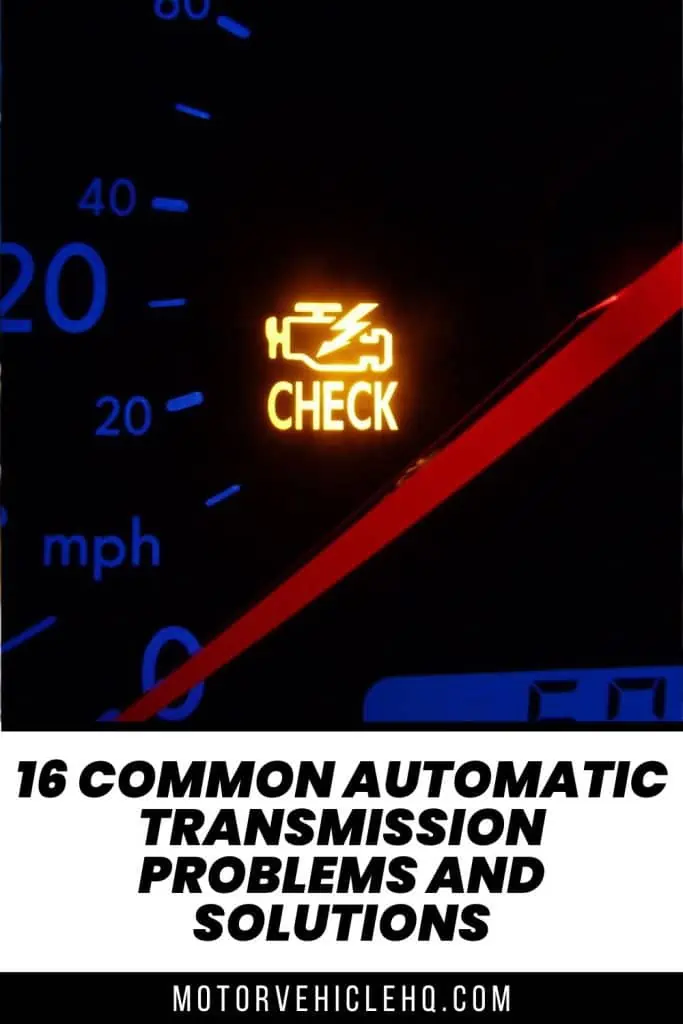
A check engine light or malfunction indicator lamp (MIL) by Wikiuser100000 / CC BY-SA 3.0

Jim Wicks is the founder of MotorVehicleHQ. With over two decades of experience in the automotive industry and a degree in Automotive Technology, Jim is a certified car expert who has worked in various roles ranging from a mechanic, car dealership manager, to a racing car driver. He has owned more than 20 cars over the past 15 years. Ask him about any vehicle you see on the road and he can tell you the make, model and year. He loves the aesthetics of all things cars, and keeps his vehicles in pristine condition.
In his free time, Jim enjoys getting his hands dirty under the hood of a classic car or taking long drives along the country roads. His favorite car? A 1967 Shelby GT500, a true classic that, according to Jim, “represents the pure essence of American muscle.”
